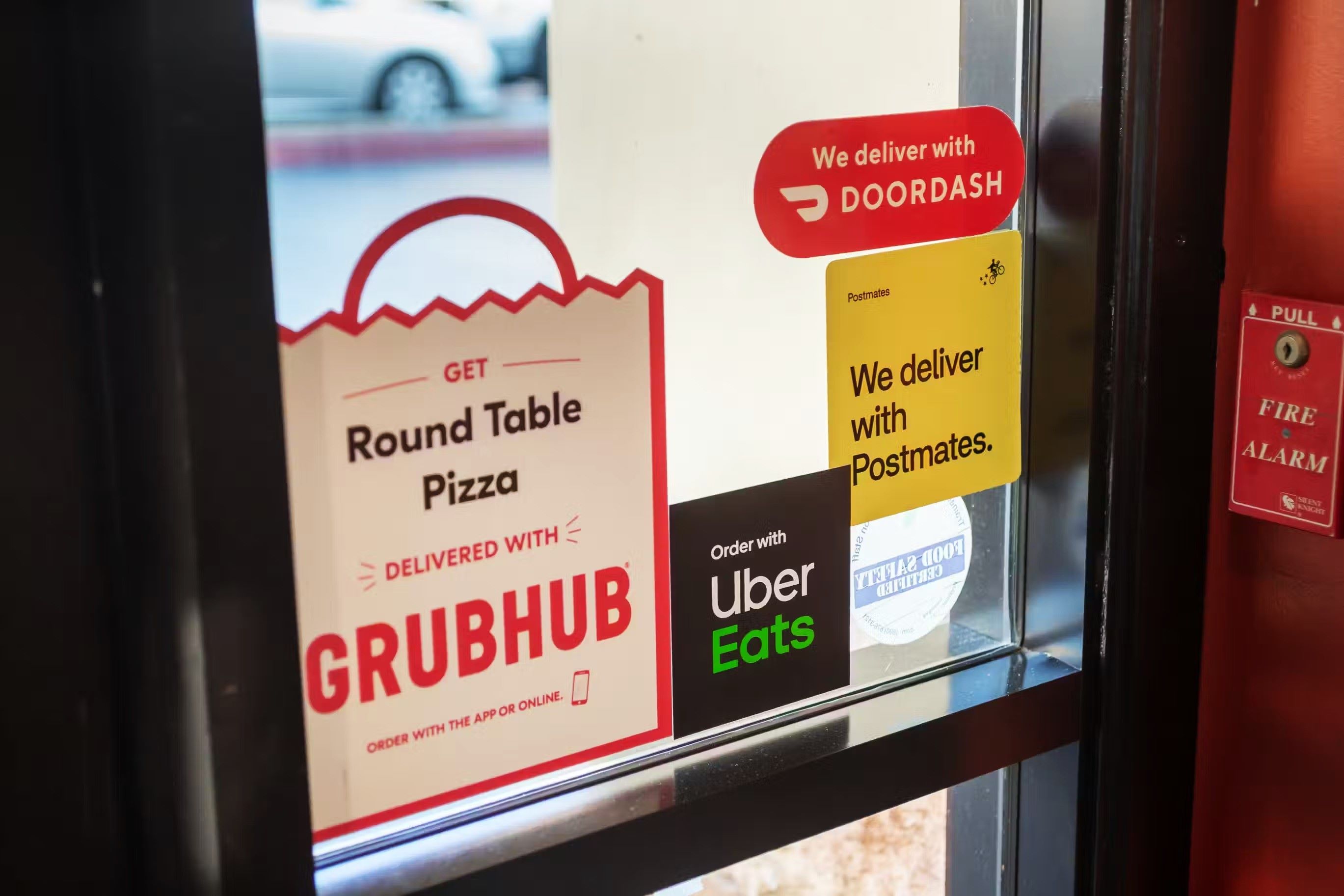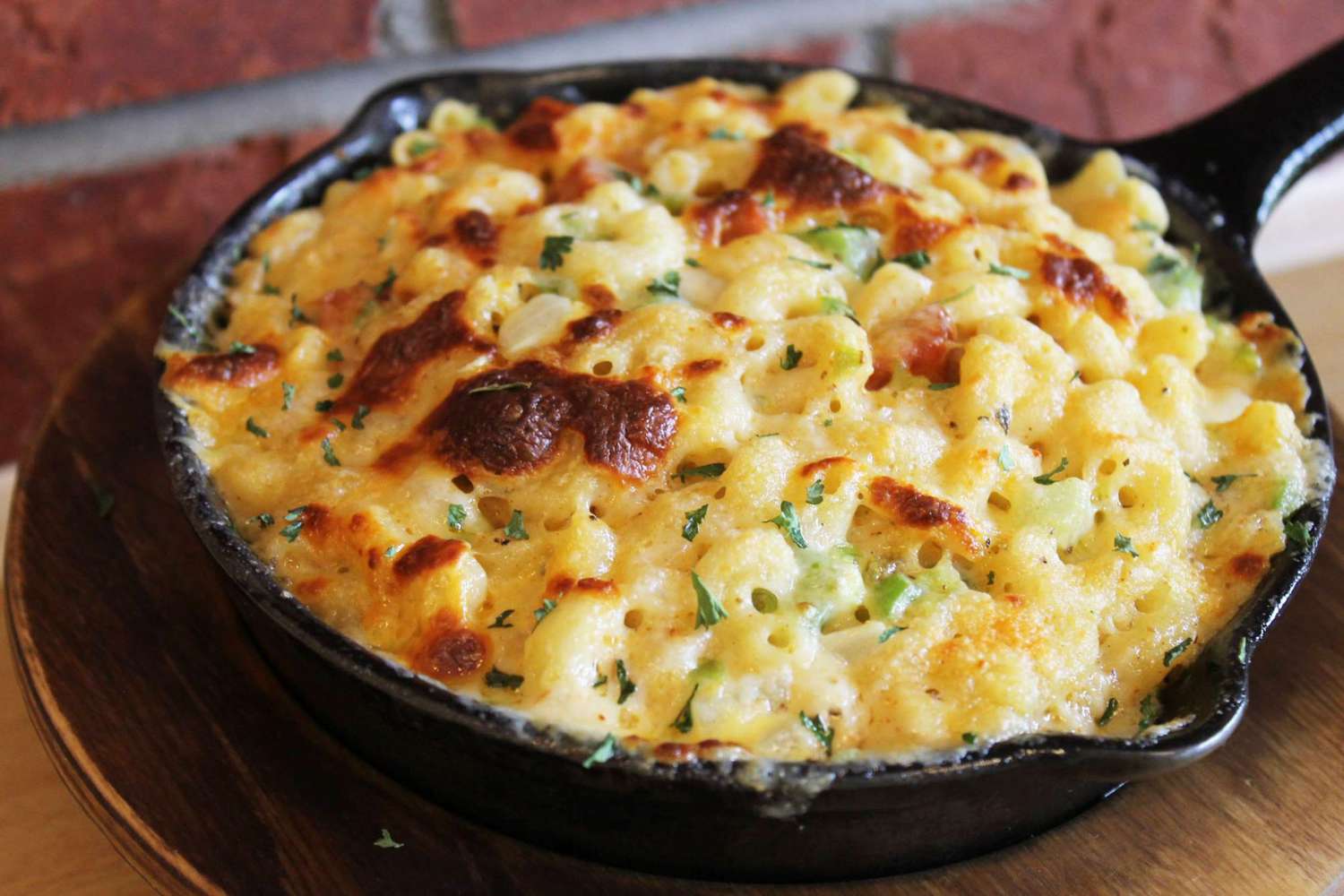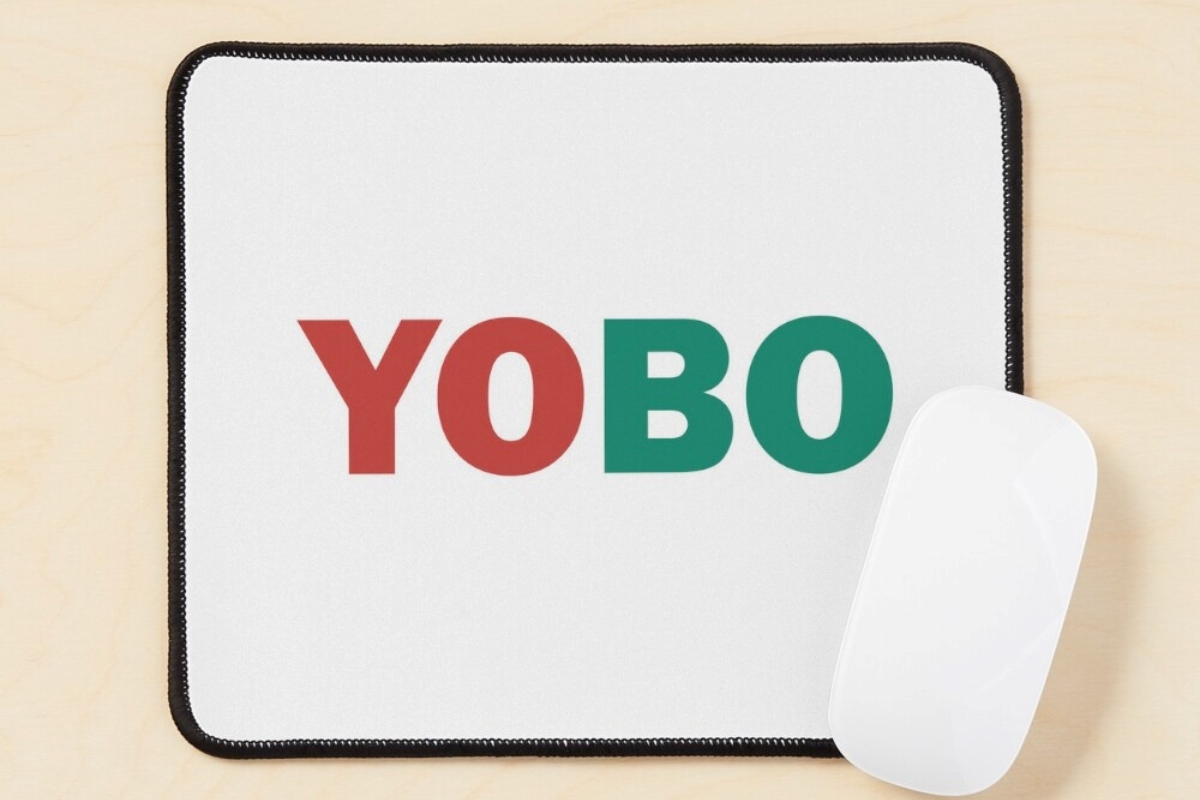Home>Business and Finance>The Surprising Reason In N Out Isn’t On GrubHub Or Postmates


Business and Finance
The Surprising Reason In N Out Isn’t On GrubHub Or Postmates
Published: January 24, 2024
Discover why In-N-Out isn't available on GrubHub or Postmates and the business and finance implications behind this surprising decision. Uncover the reasons in this insightful analysis.
(Many of the links in this article redirect to a specific reviewed product. Your purchase of these products through affiliate links helps to generate commission for Noodls.com, at no extra cost. Learn more)
Table of Contents
Introduction
In-N-Out Burger, the beloved West Coast fast-food chain, has garnered a cult-like following for its delicious burgers, fresh ingredients, and iconic secret menu. Despite its popularity, you might be surprised to learn that In-N-Out is notably absent from major food delivery platforms such as GrubHub and Postmates. This absence has left many fans wondering why they can't satisfy their In-N-Out cravings with a few taps on their smartphones.
The mystery behind In-N-Out's absence from popular food delivery services has sparked curiosity and speculation among customers and industry observers alike. To unravel this enigma, we need to delve into the history of In-N-Out and the evolution of food delivery services. By understanding the dynamics at play, we can uncover the surprising reason behind In-N-Out's decision to steer clear of these delivery platforms.
As we embark on this exploration, we will uncover the fascinating interplay between a cherished fast-food institution and the rapidly evolving landscape of food delivery. Join me as we unravel the complexities and implications of In-N-Out's strategic positioning in the digital age.
The History of In-N-Out
In-N-Out Burger, a celebrated American fast-food chain, has a rich and storied history that dates back to 1948. Founded by Harry and Esther Snyder in Baldwin Park, California, In-N-Out quickly gained a reputation for its commitment to quality, freshness, and customer satisfaction. The chain's unwavering dedication to serving fresh, made-to-order burgers and fries has been a cornerstone of its success since its inception.
One of the defining characteristics of In-N-Out is its steadfast adherence to tradition and its refusal to compromise on the quality of its offerings. The menu, which has remained refreshingly simple over the years, reflects the brand's commitment to perfecting a few classic items rather than succumbing to the temptation of an expansive, trend-driven menu. This unwavering focus on quality and consistency has endeared In-N-Out to generations of loyal customers and has cemented its status as a beloved cultural institution.
In-N-Out's commitment to maintaining control over its supply chain and operations has been instrumental in upholding its high standards. Unlike many fast-food chains that rely on frozen or pre-packaged ingredients, In-N-Out has consistently sourced fresh, high-quality produce and meat, ensuring that every burger and fry meets the brand's exacting standards. This dedication to freshness and quality has not only set In-N-Out apart from its competitors but has also contributed to its iconic status among fast-food enthusiasts.
Furthermore, In-N-Out's emphasis on customer service and employee satisfaction has played a pivotal role in shaping its identity. The brand's well-compensated and well-trained staff, coupled with its efficient service model, has resulted in a consistently positive customer experience. This focus on service excellence has been a driving force behind the brand's enduring popularity and has fostered a strong sense of community among its patrons.
In summary, the history of In-N-Out is characterized by a steadfast commitment to quality, tradition, and customer satisfaction. These enduring values have not only shaped the brand's identity but have also contributed to its remarkable success and enduring appeal. Understanding this rich history provides valuable insights into the brand's ethos and sets the stage for exploring its strategic decisions in the context of the evolving food delivery landscape.
The Rise of Food Delivery Services
The emergence of food delivery services has heralded a paradigm shift in the way consumers experience dining. Over the past decade, the convenience and accessibility offered by platforms such as GrubHub, Postmates, Uber Eats, and DoorDash have revolutionized the food industry, reshaping consumer behavior and dining trends. The proliferation of smartphones and the increasing demand for on-demand services have propelled the rapid expansion of these delivery platforms, transforming the traditional dining landscape.
One of the primary drivers of the rise of food delivery services is the growing preference for convenience among consumers. With hectic lifestyles and an increasing reliance on technology, consumers are seeking efficient and time-saving solutions to meet their dining needs. Food delivery services cater to this demand by offering a seamless and user-friendly experience, allowing customers to browse diverse menus, place orders, and have their favorite meals delivered directly to their doorsteps.
Moreover, the evolving preferences of millennials and Gen Z, who prioritize experiences and convenience, have significantly contributed to the surge in food delivery services. These digital-native demographics are accustomed to instant gratification and personalized experiences, making them ideal candidates for the convenience and variety offered by food delivery platforms. The ability to explore a wide array of culinary options, discover new eateries, and customize orders to suit individual preferences has resonated strongly with these consumer segments.
The competitive landscape of food delivery has also intensified, with major players vying for market share and consumer loyalty. This competition has led to innovative strategies, aggressive marketing campaigns, and partnerships with restaurants to expand their offerings and enhance customer engagement. Additionally, the integration of advanced technology, such as AI-driven recommendations and real-time order tracking, has elevated the overall dining experience, further fueling the popularity of food delivery services.
As a result, the food delivery market has experienced exponential growth, with an increasing number of restaurants, including renowned chains and local eateries, joining these platforms to tap into the burgeoning demand for delivery. This trend has not only provided restaurants with a new revenue stream but has also empowered them to reach a wider audience beyond their physical locations. Consequently, food delivery services have become an integral part of the modern dining ecosystem, reshaping consumer expectations and influencing the strategies of food establishments.
In essence, the rise of food delivery services has reshaped the dining landscape, offering unparalleled convenience, variety, and accessibility to consumers while presenting new opportunities and challenges for restaurants. Understanding the profound impact of these delivery platforms sets the stage for unraveling the intricate dynamics between In-N-Out and the evolving food delivery landscape.
The Relationship Between In-N-Out and Food Delivery Services
In-N-Out Burger's unique relationship with food delivery services is a subject of intrigue and speculation within the culinary community. Despite the widespread prevalence of food delivery platforms, In-N-Out has deliberately chosen to abstain from participating in this burgeoning trend. This decision is rooted in the brand's unwavering commitment to preserving the quality, freshness, and customer experience that have been integral to its identity since its inception.
At the heart of In-N-Out's stance is its dedication to delivering a consistently exceptional dining experience. The brand's ethos revolves around serving freshly prepared, made-to-order meals using the finest ingredients. By refraining from engaging with food delivery services, In-N-Out retains direct control over the crucial elements that define its culinary offerings. This hands-on approach ensures that each burger, each batch of fries, and every milkshake adheres to the exacting standards that have earned the brand its stellar reputation.
Furthermore, In-N-Out's decision aligns with its commitment to upholding the integrity of its products. The brand's iconic menu, characterized by its simplicity and focus on quality, is meticulously curated to ensure that every item meets the brand's exacting standards. By eschewing food delivery platforms, In-N-Out safeguards its ability to maintain the optimal condition of its offerings from the kitchen to the customer's table, preserving their freshness and flavor.
Additionally, In-N-Out's deliberate absence from food delivery services underscores its dedication to fostering a unique and immersive dining environment. The brand places a premium on the in-store experience, emphasizing personalized customer interactions, efficient service, and a welcoming atmosphere. By encouraging patrons to savor their meals in the restaurant, In-N-Out cultivates a sense of community and tradition that sets it apart from the impersonal nature of food delivery.
Moreover, In-N-Out's decision reflects its strategic approach to managing demand and supply. By focusing on its physical locations and optimizing their operational efficiency, the brand can maintain control over the volume of orders and ensure that each customer receives the highest quality of service and products.
In essence, In-N-Out's relationship with food delivery services is defined by its unwavering dedication to preserving the essence of its brand. Through its deliberate absence from these platforms, In-N-Out reaffirms its commitment to delivering an unparalleled dining experience that transcends mere convenience, resonating with patrons who seek authenticity, tradition, and uncompromising quality in every bite.
The Impact on In-N-Out's Business
In-N-Out Burger's deliberate decision to abstain from popular food delivery services has exerted a discernible impact on its business operations and brand positioning. While the absence from these platforms may seem counterintuitive in the era of digital convenience, it aligns with In-N-Out's steadfast commitment to upholding its core values and preserving the essence of its brand.
One of the most palpable effects of In-N-Out's absence from food delivery services is the preservation of its brand identity. By maintaining a direct and exclusive focus on its physical locations, In-N-Out reinforces its image as a purveyor of authentic, in-store dining experiences. This strategic choice enables the brand to cultivate a sense of tradition and community, fostering a loyal customer base that values the unique ambiance and personalized service synonymous with In-N-Out.
Furthermore, In-N-Out's decision has effectively positioned it as an outlier in the fast-food landscape, distinguishing it from the homogenized, delivery-centric model embraced by many of its competitors. This differentiation has bolstered the brand's appeal, attracting consumers who seek a departure from the ubiquitous trend of at-home dining experiences facilitated by food delivery services. In essence, In-N-Out's deliberate absence has become a defining characteristic that sets it apart and contributes to its enduring allure.
Moreover, the impact of eschewing food delivery platforms extends to In-N-Out's operational dynamics. By concentrating on optimizing its in-store efficiency and customer service, the brand can uphold its exacting standards and ensure that every aspect of the dining experience aligns with its commitment to excellence. This meticulous approach has allowed In-N-Out to maintain control over its operations, fostering a level of consistency and quality that resonates with discerning patrons.
In a broader sense, In-N-Out's strategic stance has influenced consumer perceptions and behaviors, thereby shaping its business trajectory. The brand's unwavering dedication to the in-store dining experience has cultivated a loyal customer base that values the authenticity and tradition synonymous with In-N-Out. This has translated into sustained patronage and a distinct competitive advantage, positioning In-N-Out as a revered icon in the fast-food industry.
In summary, the impact of In-N-Out's absence from food delivery services transcends mere operational considerations, permeating its brand identity and customer relationships. By remaining steadfast in its commitment to in-store dining, In-N-Out has carved out a unique niche and fortified its position as a cherished culinary institution, further solidifying its resonance with a discerning consumer base.
Conclusion
In-N-Out Burger's conspicuous absence from major food delivery services embodies a strategic choice deeply rooted in its unwavering commitment to preserving the essence of its brand. The brand's storied history, characterized by a steadfast dedication to quality, tradition, and customer satisfaction, has shaped its approach to navigating the evolving landscape of food delivery. By choosing to eschew popular delivery platforms such as GrubHub and Postmates, In-N-Out has reaffirmed its allegiance to delivering an unparalleled in-store dining experience, rooted in authenticity, community, and uncompromising quality.
The rise of food delivery services has undeniably transformed the dining landscape, offering unparalleled convenience and variety to consumers while presenting new opportunities and challenges for restaurants. However, In-N-Out's deliberate decision to remain exclusive to its physical locations underscores its commitment to fostering a unique and immersive dining environment, distinct from the impersonal nature of food delivery. This strategic choice has not only preserved the brand's identity but has also positioned it as an outlier in the fast-food industry, attracting patrons who value tradition and authenticity.
The impact of In-N-Out's absence from food delivery services extends beyond operational considerations, permeating its brand identity and customer relationships. By concentrating on optimizing its in-store efficiency and customer service, the brand has maintained a level of consistency and quality that resonates with discerning patrons. This strategic positioning has fortified In-N-Out's position as a revered culinary institution, solidifying its resonance with a loyal and discerning consumer base.
In essence, In-N-Out's deliberate abstention from food delivery services serves as a testament to its unwavering commitment to upholding its core values and delivering an exceptional dining experience. By remaining steadfast in its dedication to in-store dining, In-N-Out has carved out a unique niche, distinguishing itself as a cherished icon in the fast-food industry. As the culinary landscape continues to evolve, In-N-Out's strategic positioning stands as a testament to the enduring power of tradition, authenticity, and uncompromising quality in shaping consumer preferences and industry dynamics.














